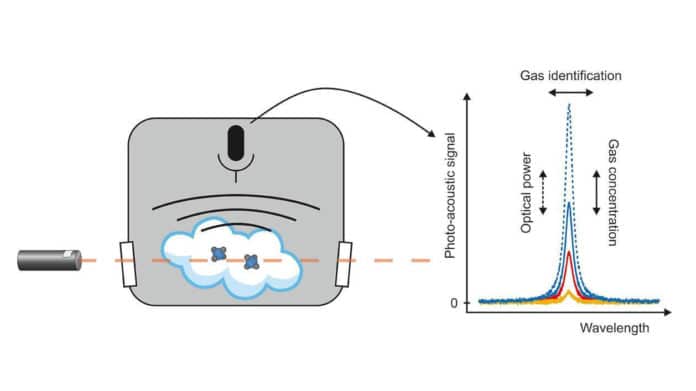Trace gasses indicate substances that occur in low amounts in the air and other media. Regardless of their low concentrations, trace gasses can significantly affect the chemical properties of gaseous compounds. Consequently, their exact identification and quantification is significant.
In a new study, Teemu Tomberg from the University of Helsinki developed detection methods that make it possible to measure extremely small traces of various gasses. The method is based on background-free laser absorption spectroscopy.
The method has unique characteristics that make it suitable for the detection of extremely low gas concentrations. Such characteristics include scalability with optical power combined with reduced sensitivity to optical power fluctuations.
Tomberg says, “Background-free means that an attempt is made to eliminate any interfering signals not originating from the target being measured.”
Tomberg used two spectroscopic approaches:
1. A novel interferometric method to measure background free broadband absorption spectra
2. Cantilever-enhanced photoacoustic spectroscopy
Tomberg says, “I conducted the measurements in the mid-infrared region using a number of different laser light sources, such as optical parametric oscillators, optical frequency combs, and quantum cascade lasers.”
Through his measurements, Tomberg demonstrated that the new technique improves the signal-to-noise ratio of absorption spectroscopy by roughly a factor of five compared to regular direct absorption spectroscopy. The benefit gained was restricted by the low optical power of the lasers used, and the signal-to-noise ratio can be further improved by using high-power lasers.
In examining cantilever-enhanced photoacoustic spectroscopy, Tomberg arrived at record-level detection sensitivities by employing high optical power.
The methods have exciting potential for applications: One such application would be an artificial nose for detecting diseases.
The study opens new avenues for developing equipment for field applications. Tomberg’s findings illustrate how laser absorption spectroscopy can be utilized as an advanced detector gas chromatograph, particularly in field applications where the compactness and maintenance-free operation of lasers are useful.
Journal Reference:
- Application of interferometry and cantilever-enhanced photo-acoustic spectroscopy to background-free trace gas detection. helda.helsinki.fi/handle/10138/319590
